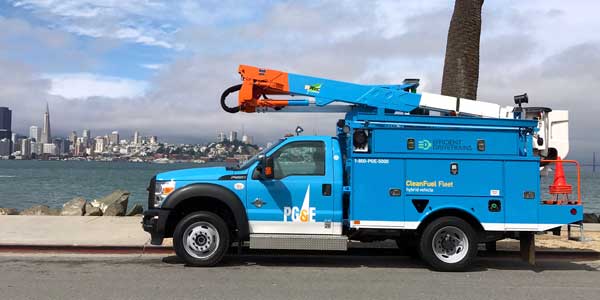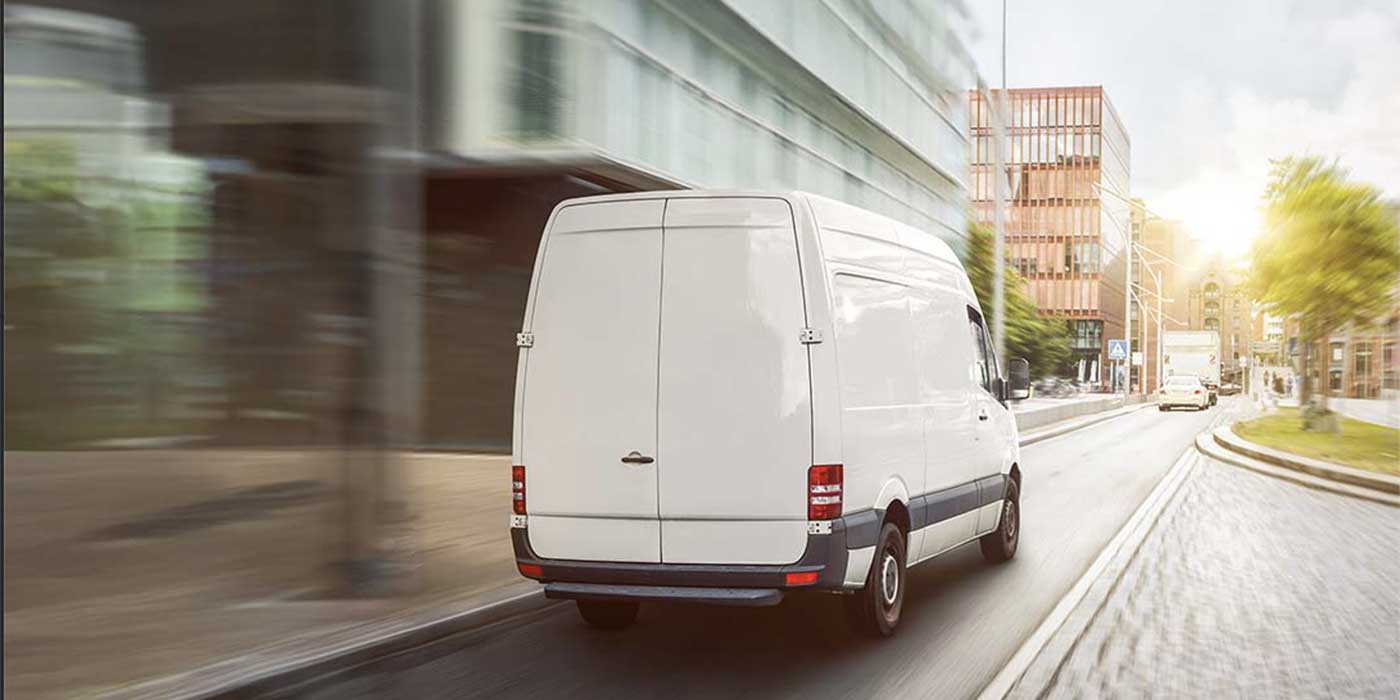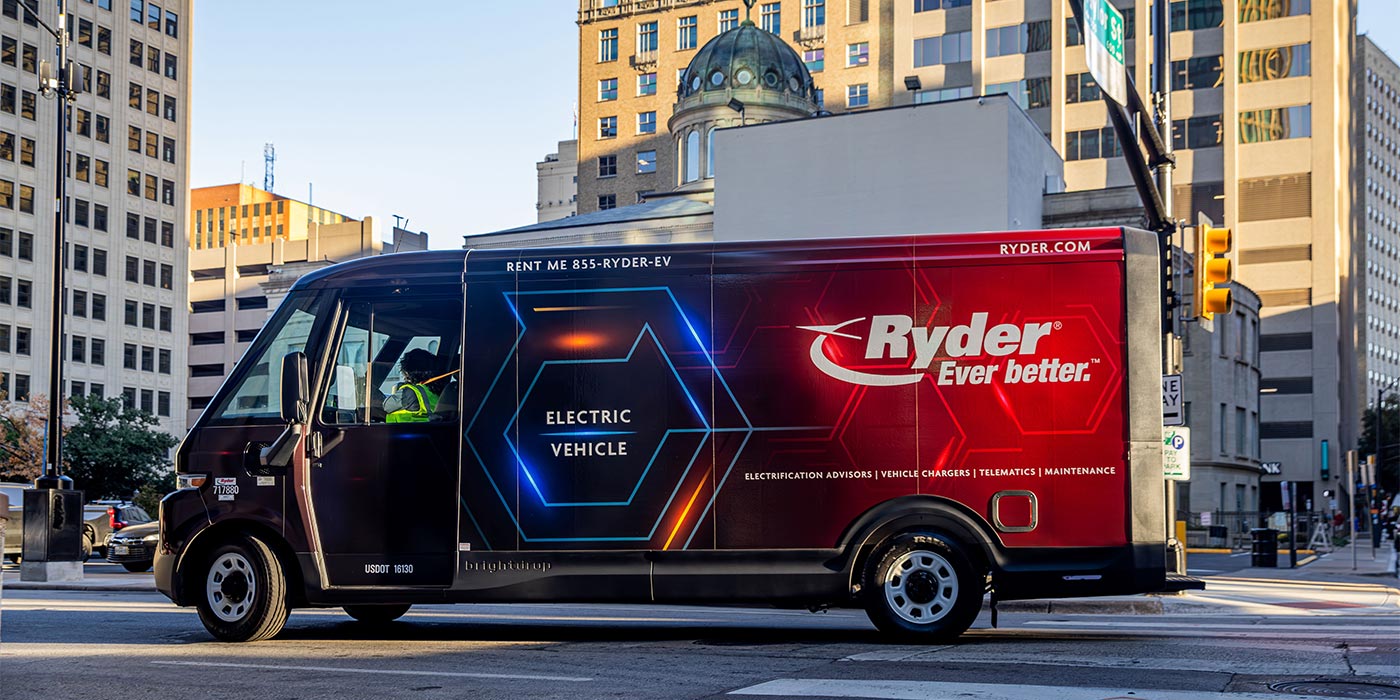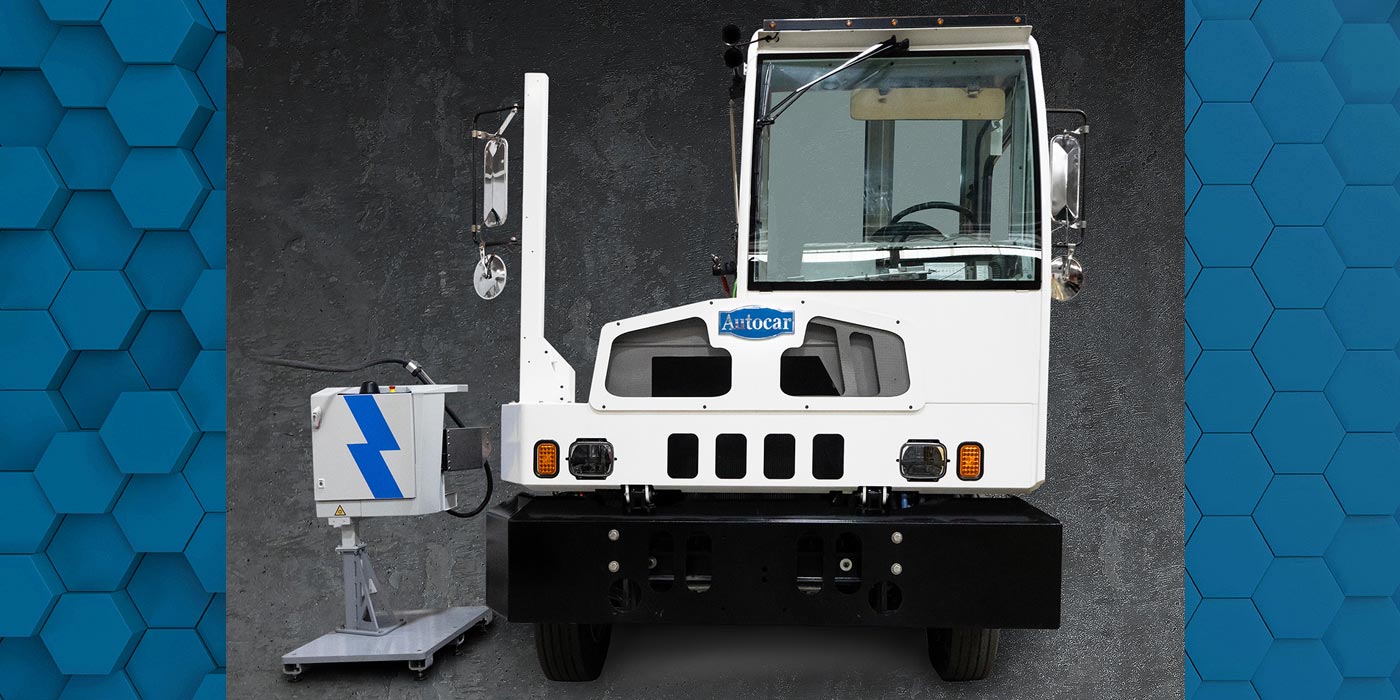A longtime innovator in the adoption of alternative fuel technologies into its fleet of nearly 14,000 vehicles, Pacific Gas and Electric Company (PG&E) is also leading the charge when it comes to fleet electrification. The natural gas and electric utility company, based in San Francisco and serving nearly 16 million people in Northern and Central California, recently revealed details of the cost savings and environmental benefits of that approach.
PG&E operates nearly 3,500 alternative fuel vehicles, including over 1,600 electric and electric hybrid units. The fleet includes natural gas, hybrid electric (HEV), and battery electric (BEV) and plug-in electric hybrid vehicles (PHEVs). In recent years, the company has been adding more PHEVs and trucks with electric power takeoff (ePTO) technology.
When it comes to vehicle electrification, there is no one-size-fits-all solution for an operating territory that stretches from just north of Los Angeles to the Oregon border. Given that pure BEVs would not be practical in all applications and areas, PG&E is using several alternatives.
ePTO bucket trucks are one of those technologies. First deployed in 2011, PG&E pioneered the development of these vehicles in partnership with Altec Industries and currently operates 906 trucks with electric power takeoff technology.
PG&E trucks with ePTO systems utilize a series of batteries to allow crews to operate the bucket and other onboard equipment without having to idle the engine. Through the implementation of ePTO technology alone, the utility reports it has displaced more than 2.6 million gallons of fuel, saving nearly $10 million.
In addition to fuel savings, PG&E says that ePTO technology offers improved jobsite safety, since crews do not have to communicate over noisy, idling diesel engines. The quiet operation of these vehicles also allows the utility to work around the clock to help shorten outages, which would not have previously been feasible in some areas due to noise concerns.
PHEVs have also proven to be a valuable vehicle electrification technology for PG&E in several operational uses, including employee pool cars, off-road and warehouse equipment, and Class 5 through 8 trucks. While the utility has been utilizing PHEV light-duty vehicles for over a decade, more recently it became the first utility in the nation to deploy Class 5 and 6 PHEV bucket and work trucks.
Developed in partnership with electric vehicle manufacturer Efficient Drivetrains Inc., the Class 5 and 6 units provide utility-grade exportable power, enough to power over 80% of the transformers in its service area or to keep the lights on in up to 100 homes during planned and unplanned outages.
The end result of PG&E’s aggressive fleet electrification approach is significant savings in fuel costs and major reductions in greenhouse gas (GHG) emissions from its fleet. Through the deployment of over 1,600 electric vehicles, HEVs and PHEVs since 2011, the company reports it has saved over $15 million in fuel costs by displacing nearly four million gallons of diesel and gasoline. In 2016 alone, the utility reduced its fuel costs by $3.8 million through fleet electrification.
Equally impressive is a reduction in fleet emissions of nearly 40,000 metric tons since 2011, equivalent to taking almost 8,500 conventional fuel vehicles off the road for one year. In 2016 alone, PG&E saw a drop of over 10,000 metric tons of GHG emissions, equal to taking approximately 2,200 gas powered vehicles off the road for one year.
“We’ve seen cost savings not only through the reduced fuel consumption from utilizing plug-in electric vehicle technology, but also significant reductions in maintenance costs due to the simplicity of design that electric and electric hybrid drivetrains offer,” said Dave Meisel, senior director of transportation and aviation services for PG&E.
“While we will continue to explore all available vehicle technologies, when it comes to ‘greening’ our fleet, the benefits of electric vehicle technologies not only help us save fuel and protect the air we breathe, but also the ability to provide safe, affordable, reliable and clean power to our customers,” Meisel added. “Deploying exportable power PHEVs will help us shorten unplanned outages and could even help make planned outages a thing of the past.”














